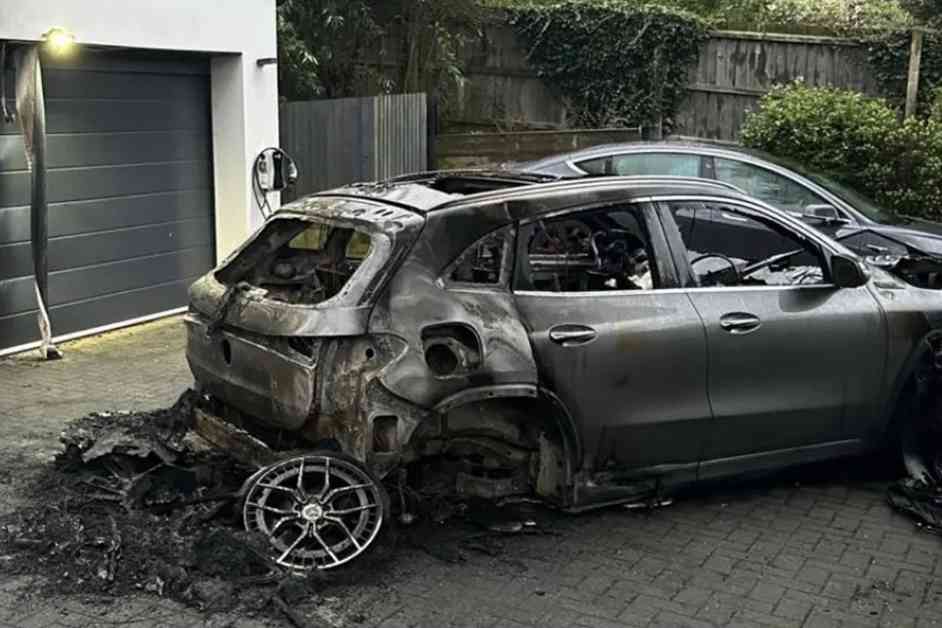A quiet evening turned terrifying for the Bayliss family in Northants when their $64,000 electric Mercedes EQA suddenly exploded in flames while parked on their driveway. The car, plugged in to charge, transformed into a dangerous blaze that spread to their garage and damaged part of their home, filling the air with thick smoke and forcing the family to evacuate in the dead of night. While the family escaped unharmed, the incident left a charred vehicle, a severely damaged home, and a lingering question: how could this happen?
The New York Post reported that Scott and Georgina Bayliss were watching television when they heard a loud popping sound. Initially, their 17-year-old son, James, thought it was fireworks, but the noise grew into a thunderous explosion that shook the house. Scott, a 47-year-old in food manufacturing, ran outside to see his luxury electric vehicle consumed by a fierce blaze, the flames spreading rapidly to their garage and scorching the walls of their front bedroom.
Scott explained, “The pace and ferocity at which the fire took hold was scary beyond belief. It was like a bomb went off right outside our front door.” He tried to use a hose to douse the fire, but it quickly became apparent that the fire was out of control. Firefighters arrived and managed to contain the blaze before it could completely destroy the family home.
One possible cause of the fire is a phenomenon called “thermal runaway,” where an electric vehicle’s lithium battery overheats, leading to intense heat and fire. Scott mentioned that from the video footage, it seemed like the car went into thermal runaway and exploded within seconds. However, due to the extensive damage, fire investigators have had difficulty pinpointing the exact cause, leaving the family with more questions than answers.
Concerns about the safety of electric vehicles have been growing following incidents like this. The Bayliss family reached out to Mercedes for answers and action but were disappointed by the carmaker’s response. While Mercedes offered a loan car, they provided little detailed feedback or reassurances. Scott expressed frustration, stating, “It’s more than just a faulty part. This was a life-threatening incident. We’re lucky to have made it out safely, but what if it had happened overnight?”
Mercedes-Benz UK stated that they are committed to investigating the incident and are working with the family’s insurer. They have offered to conduct a joint inspection shortly and provided Mr. Bayliss with a loan car as a gesture of goodwill. However, Scott feels that these promises are vague and fall short of his expectations, especially given the seriousness of the incident.
The incident involving the Bayliss family is not an isolated case. Earlier this year, a Volvo hybrid car erupted in flames, injuring the driver as he rescued his granddaughter from the burning vehicle. The grandfather suffered severe burns on over 60 percent of his body after his newly purchased Volvo XC40 hybrid burst into flames while his granddaughter was inside. This has raised concerns about the safety of electric and hybrid vehicles, prompting critics to question the measures in place to prevent such dangerous malfunctions.
These incidents highlight the importance of ensuring the safety of electric vehicles and the need for manufacturers to address potential risks and provide clear communication and support to affected customers. As the popularity of electric vehicles continues to rise, it is crucial to prioritize safety and proactive measures to prevent similar incidents in the future.













